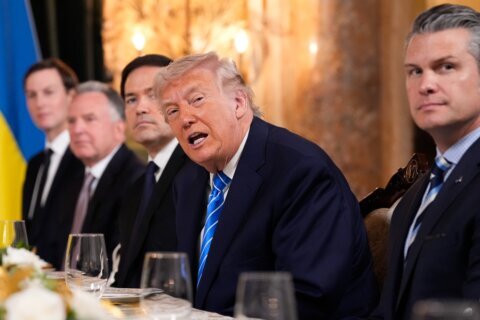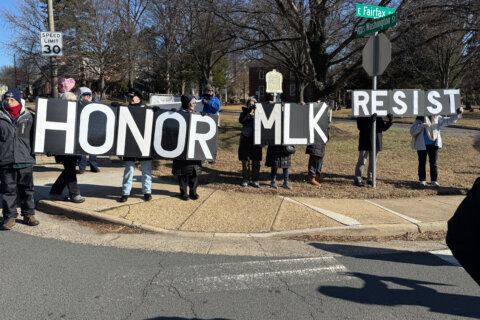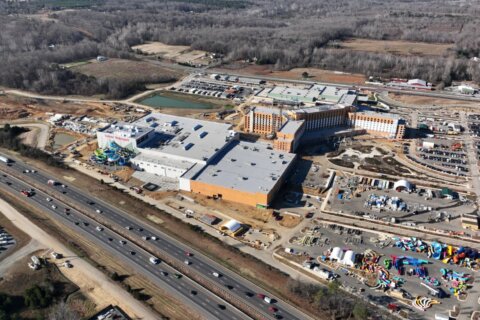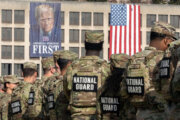We have to give credit where it’s due.
Back in 1969, legendary Washington Post publisher Katharine Graham had been listening to WAVA, a small AM station out of the Virginia suburbs that broadcast all news.
WTOP, then owned by the Post (and located at 1500 on your AM dial) was different from what you hear today. It had programming that consisted of some newscasts and call-in talk shows. Graham saw real potential in WTOP likewise narrowing its focus to a continuous radio newscast — especially in the nation’s capital, longtime WTOP Capitol Hill correspondent Dave McConnell recalled.
“Since WTOP was owned by one of the country’s top newspapers, it made sense to have its own local radio station enhance its own newsgathering capabilities,” he said.
So the woman whose paper would topple a presidency sent the word to station brass: Focus on the news. And on that day in March 1969, McConnell was the first anchor to read the headlines at the top of the hour.
WTOP remains a news station 50 years after he anchored that first newscast, even in an age of abundant, ubiquitous information — and through ownership, frequency and address changes.
As Washington’s Top News marks this milestone, we asked some of the people who helped make it what it is today to look back at their experiences and at the stories that have touched the nation’s capital.
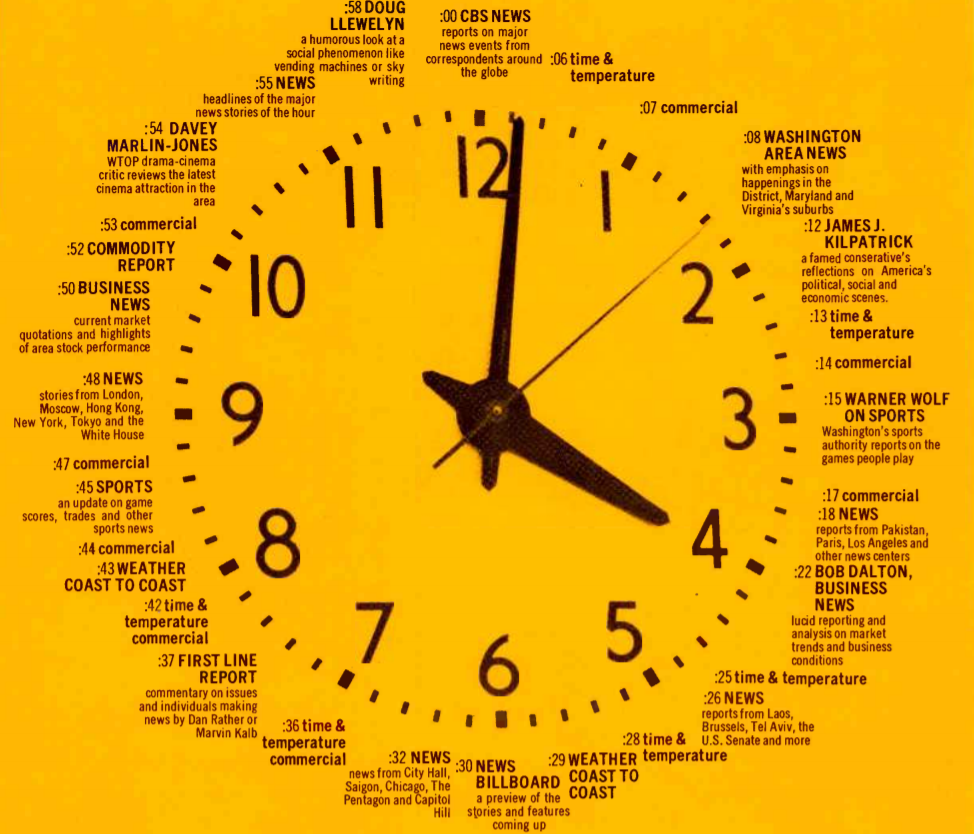
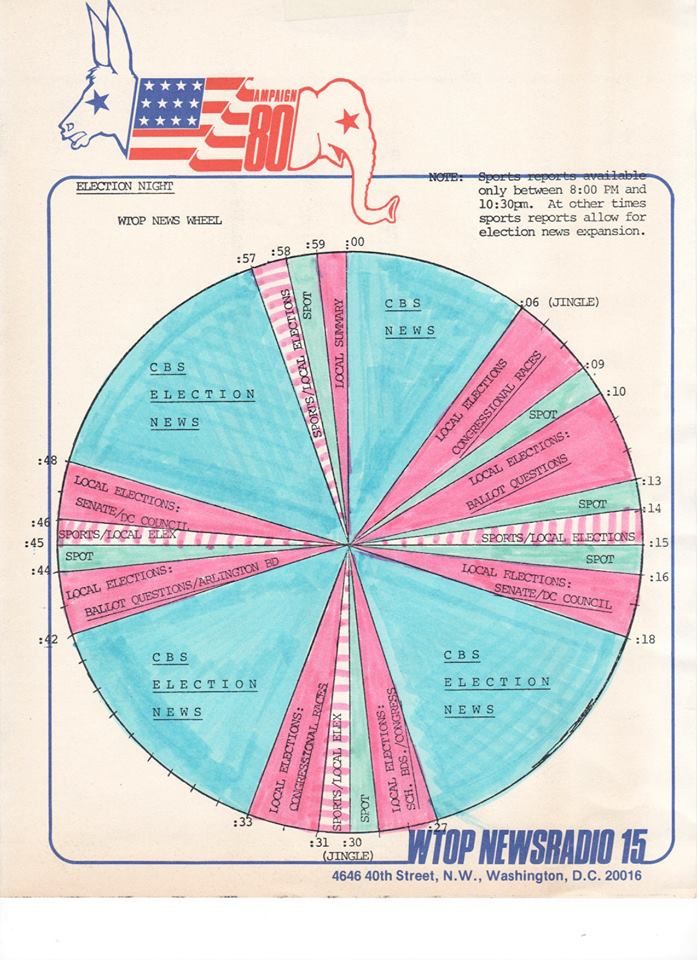
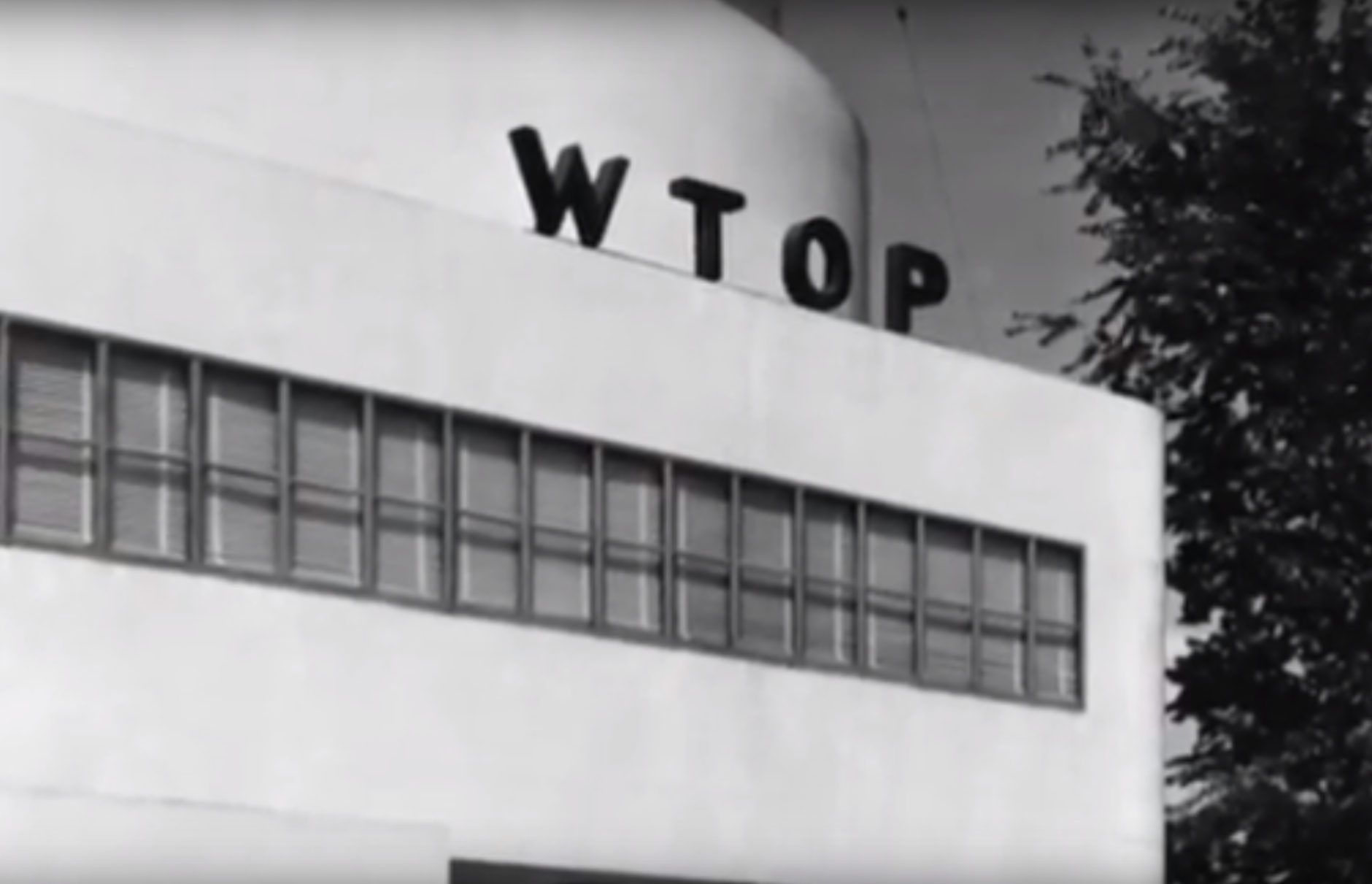
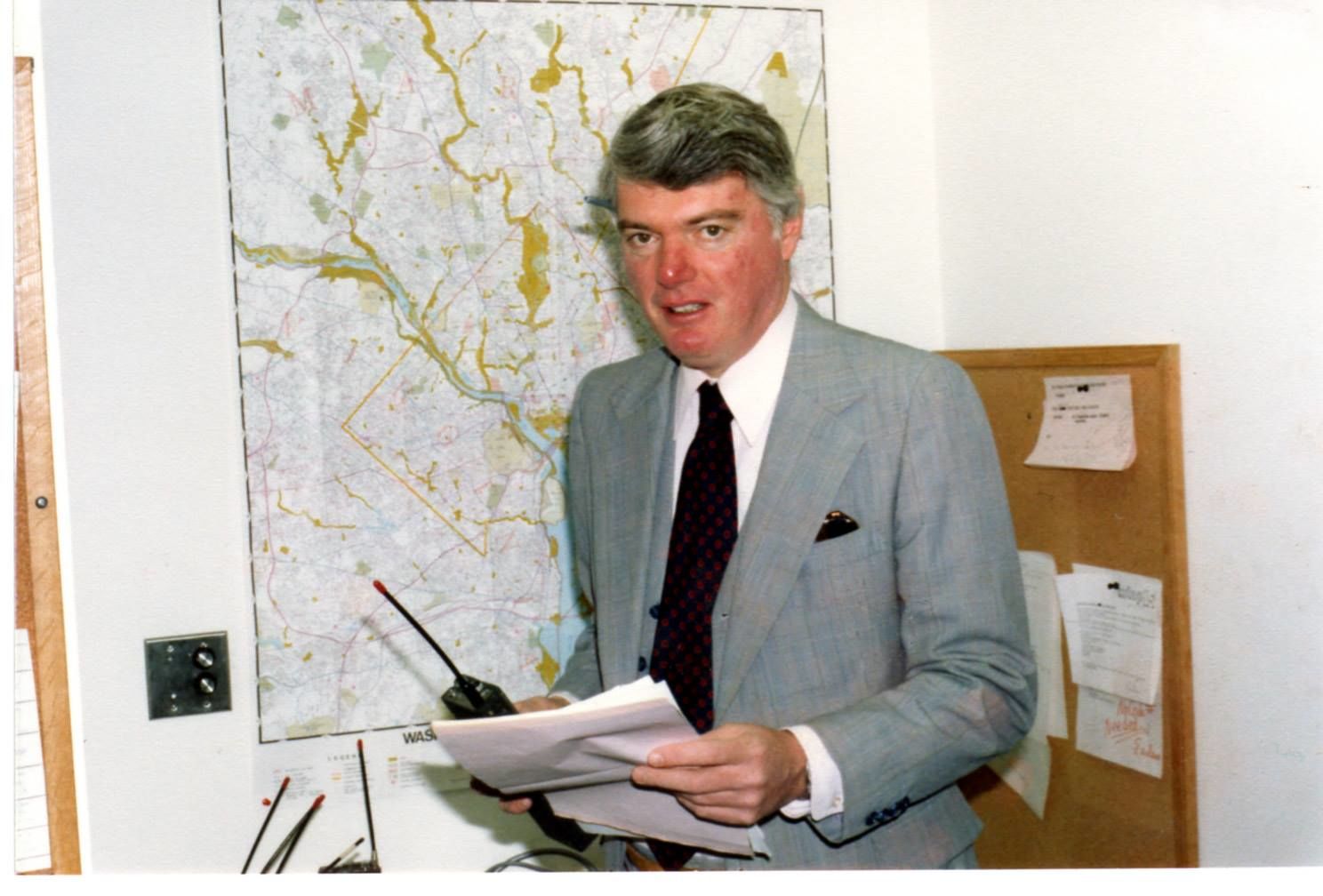
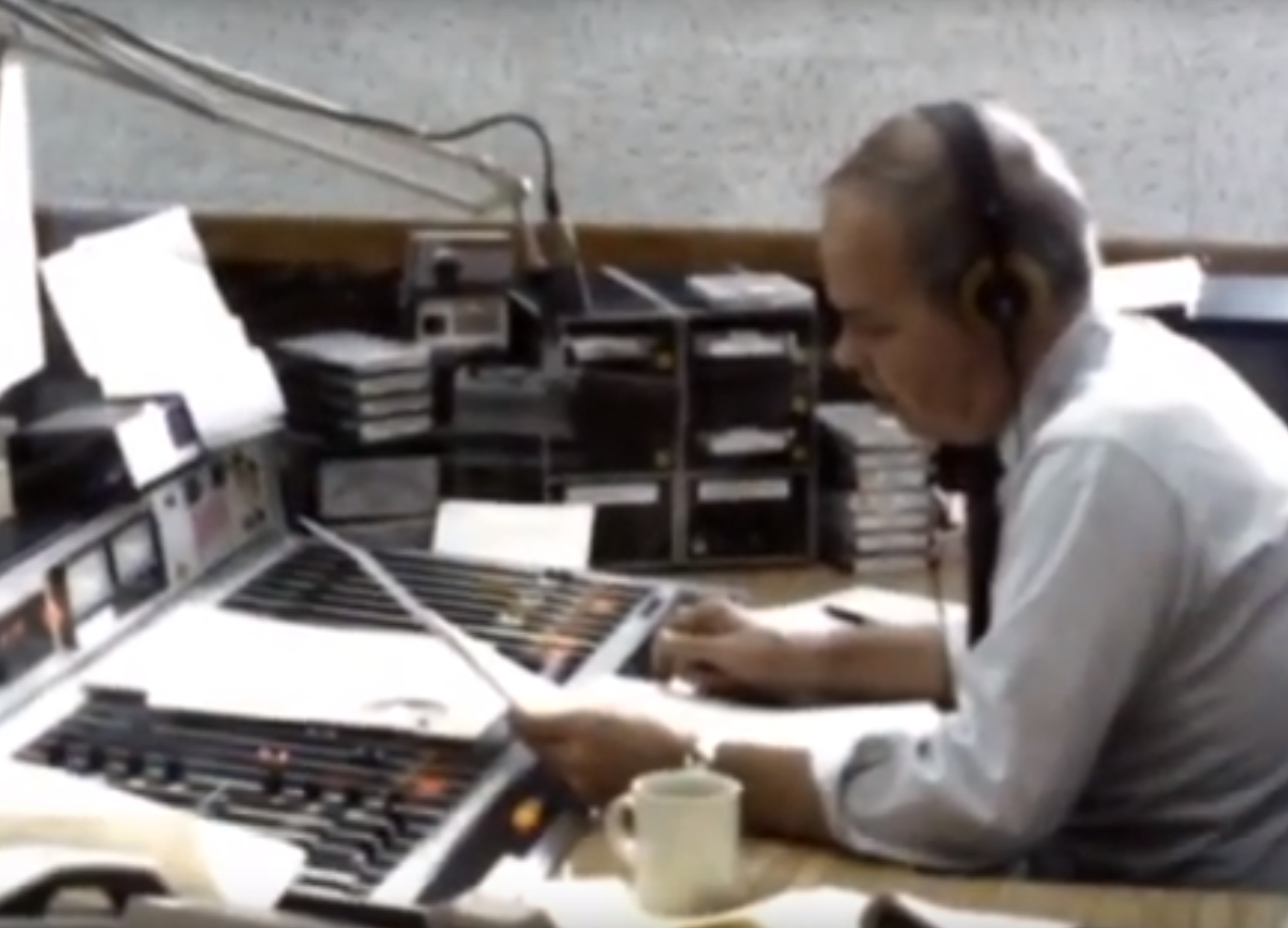
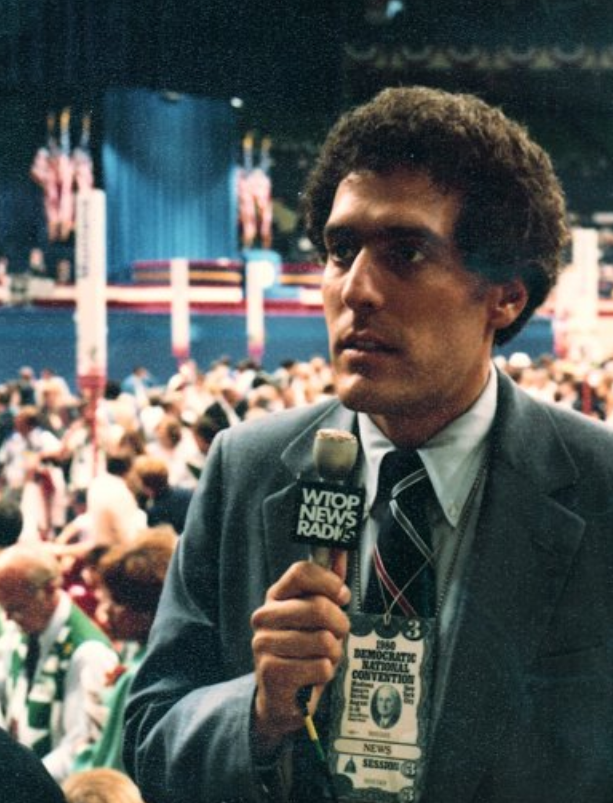
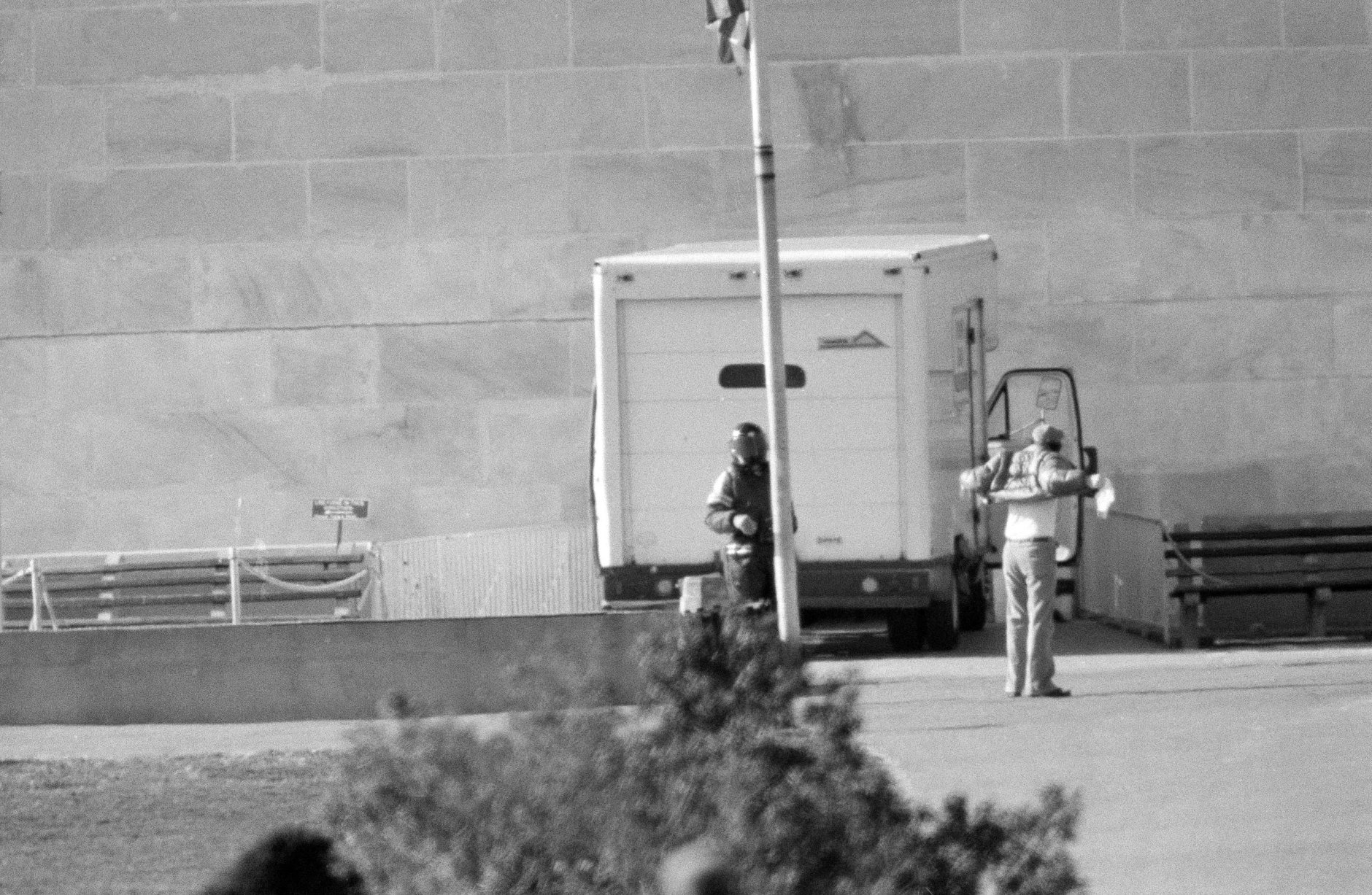
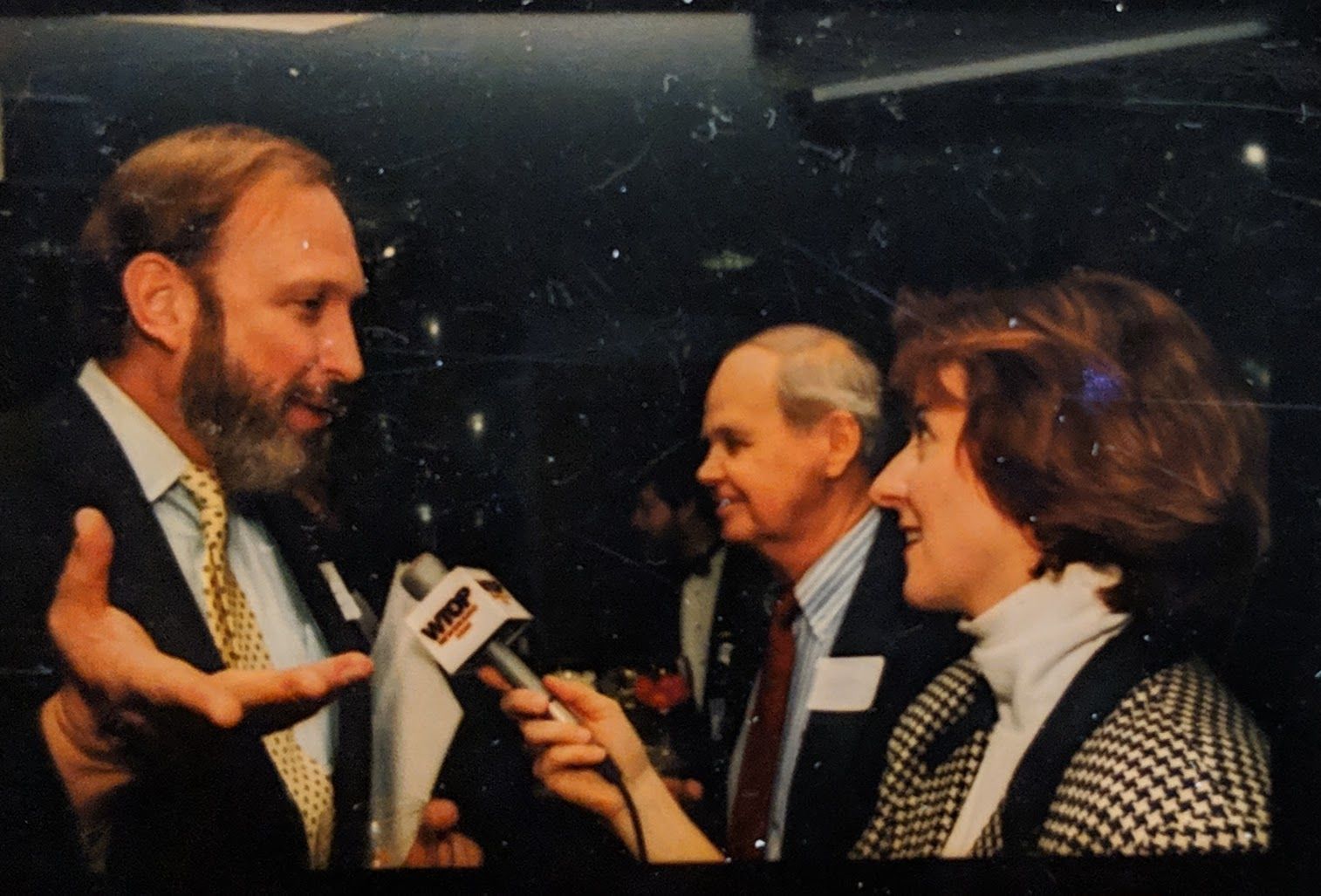
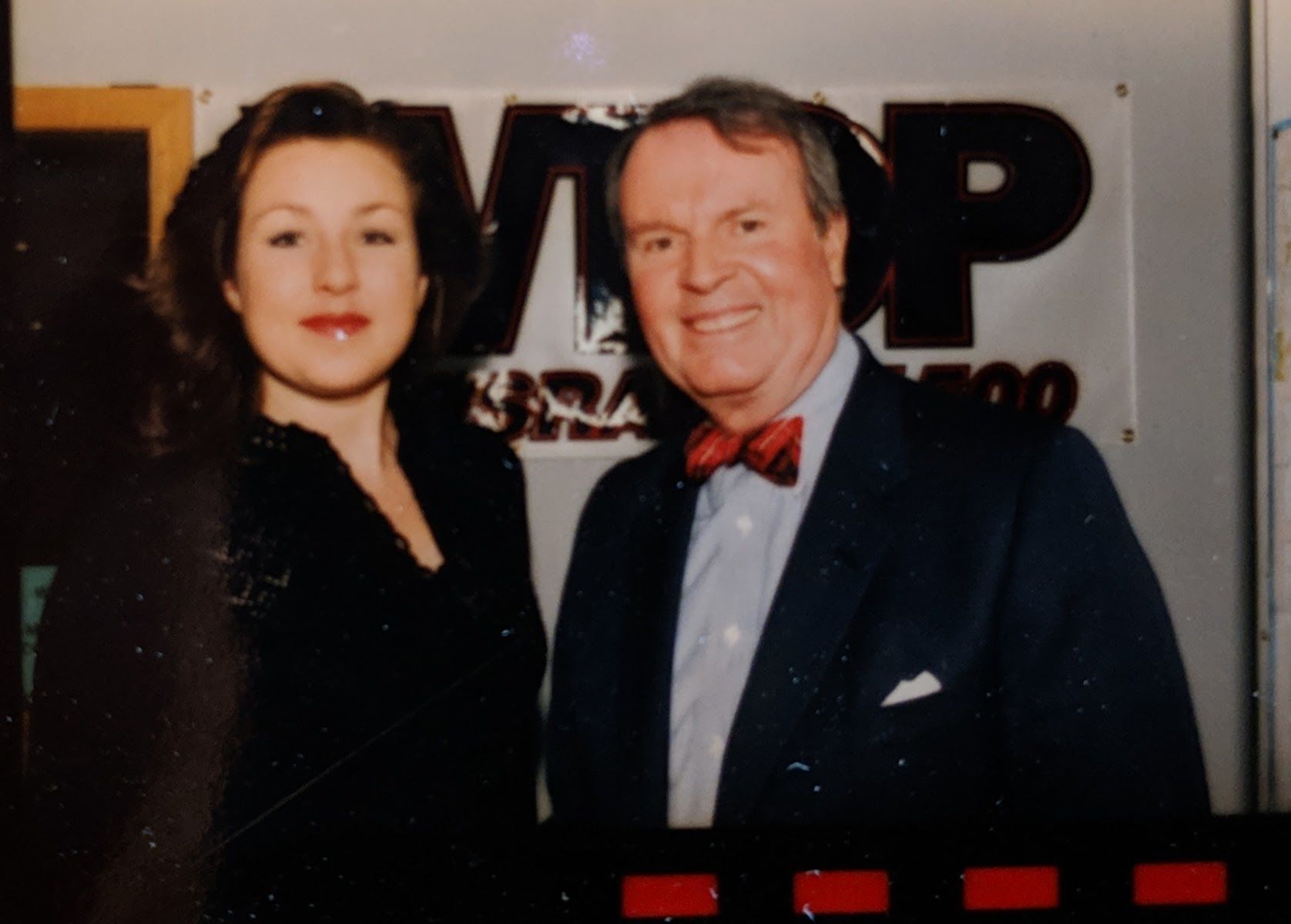
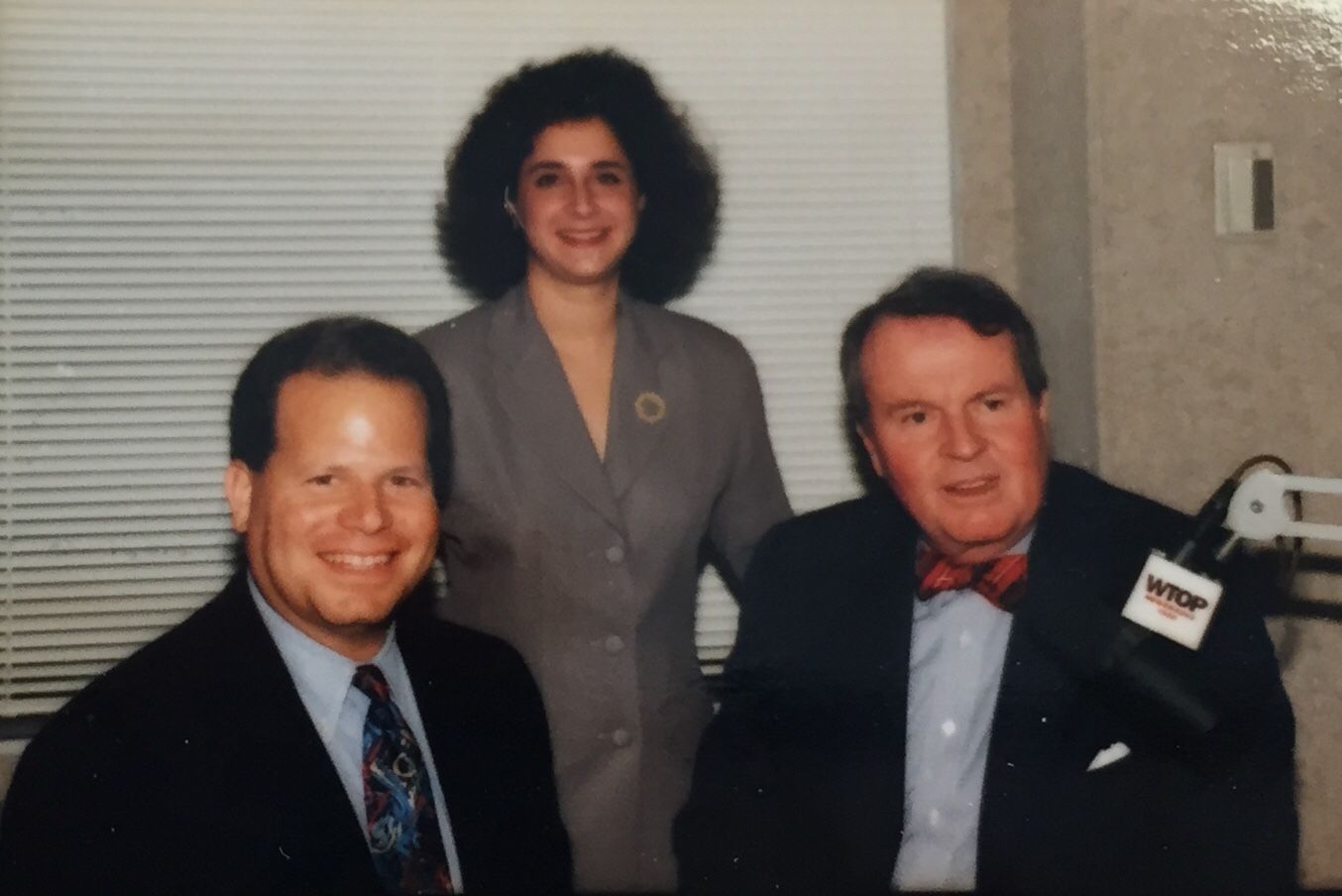
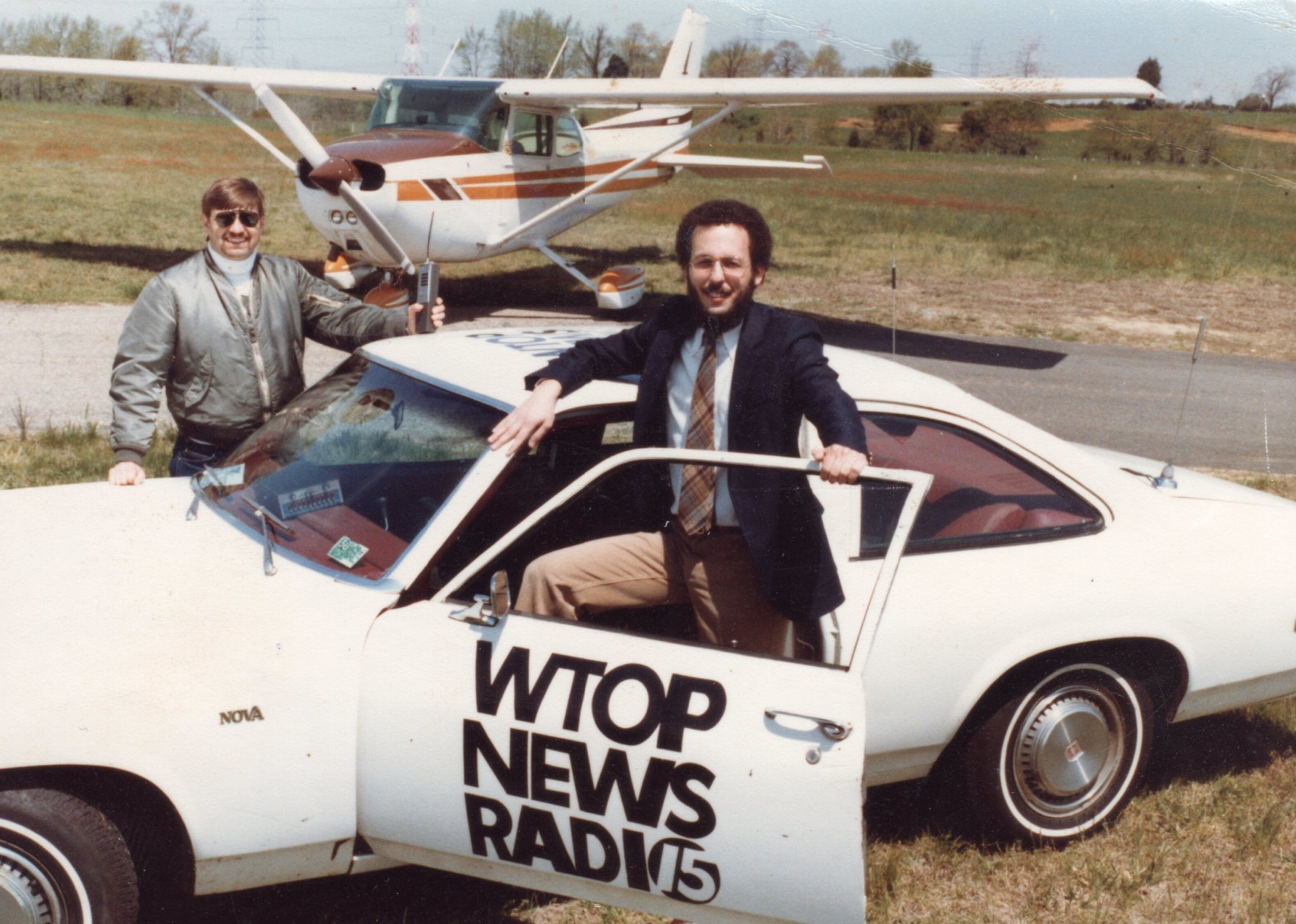
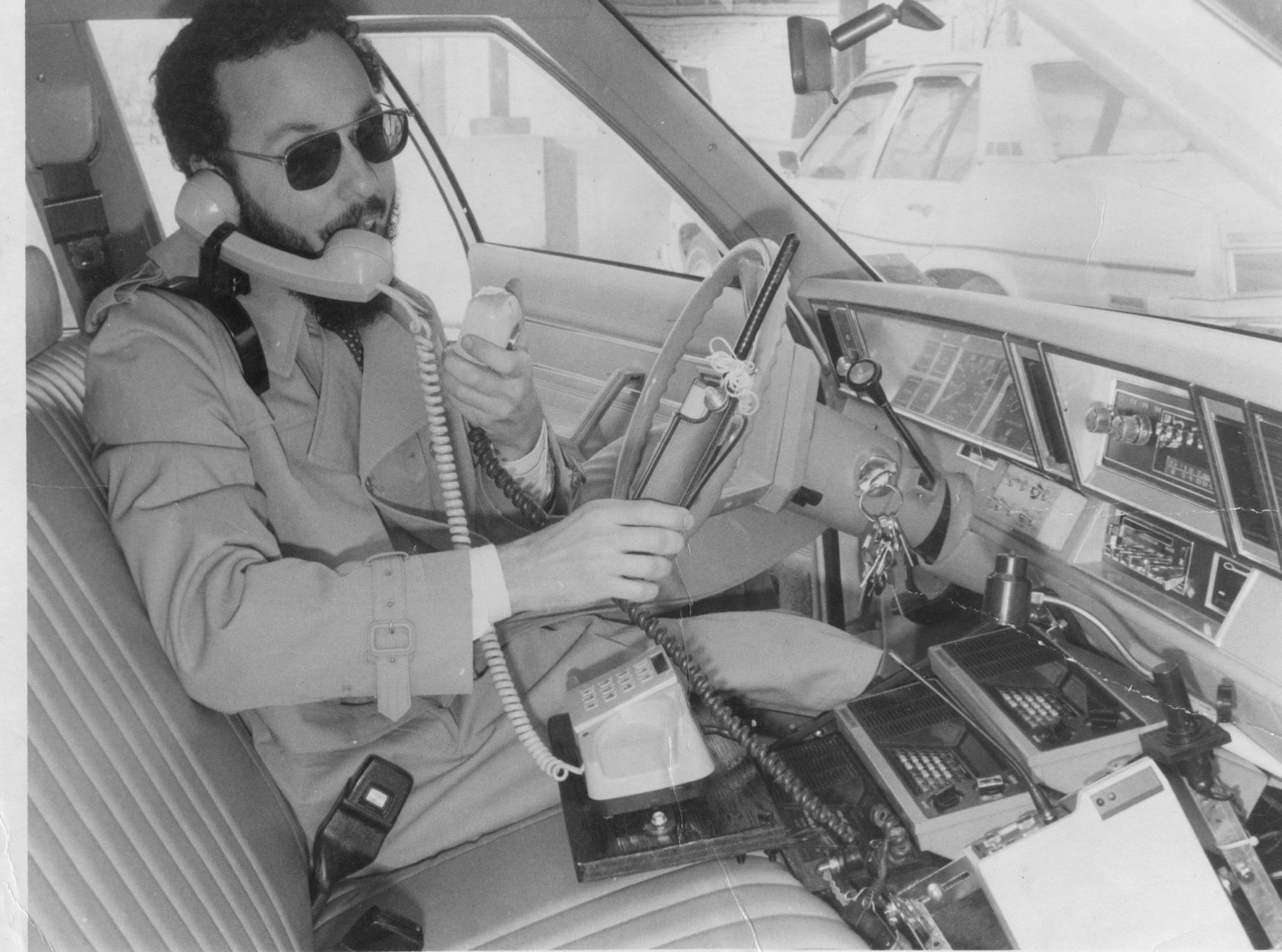
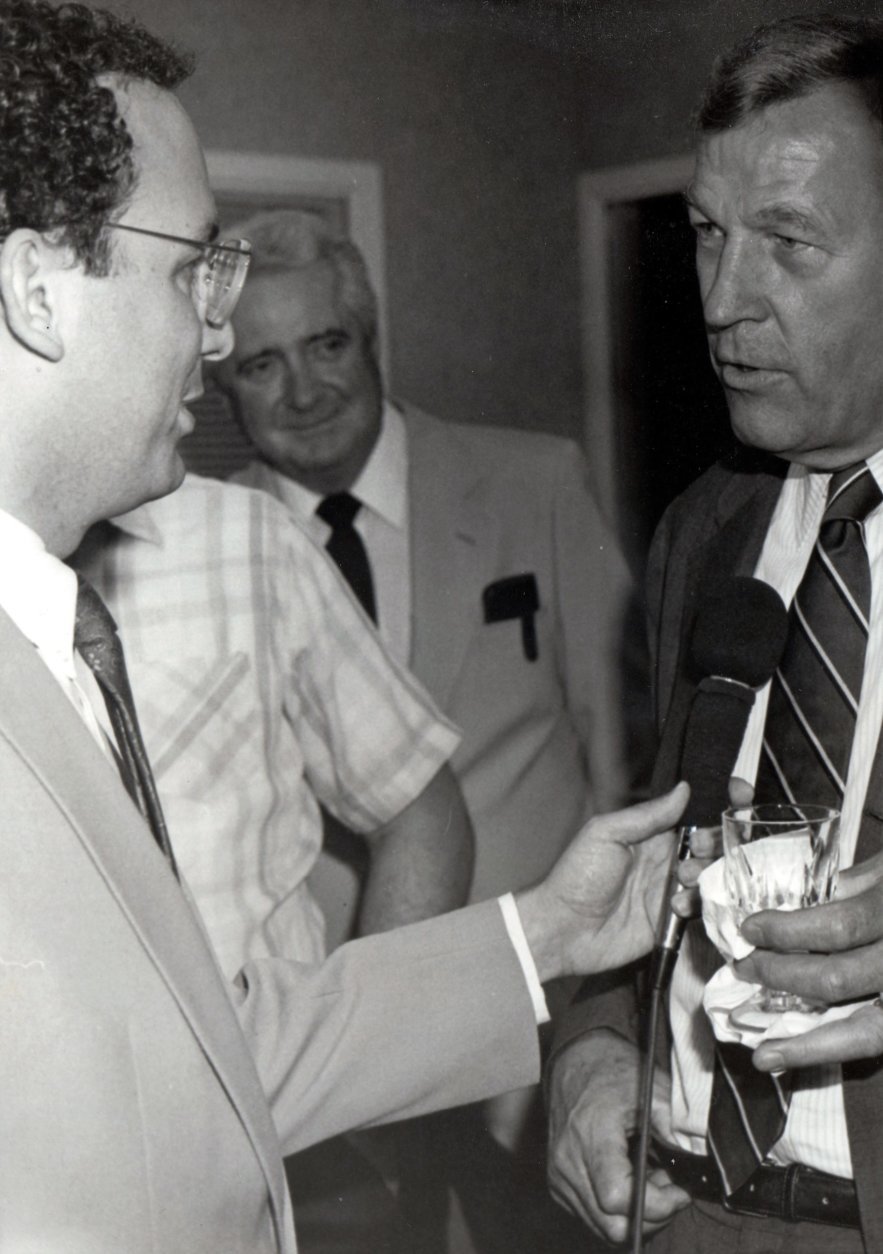

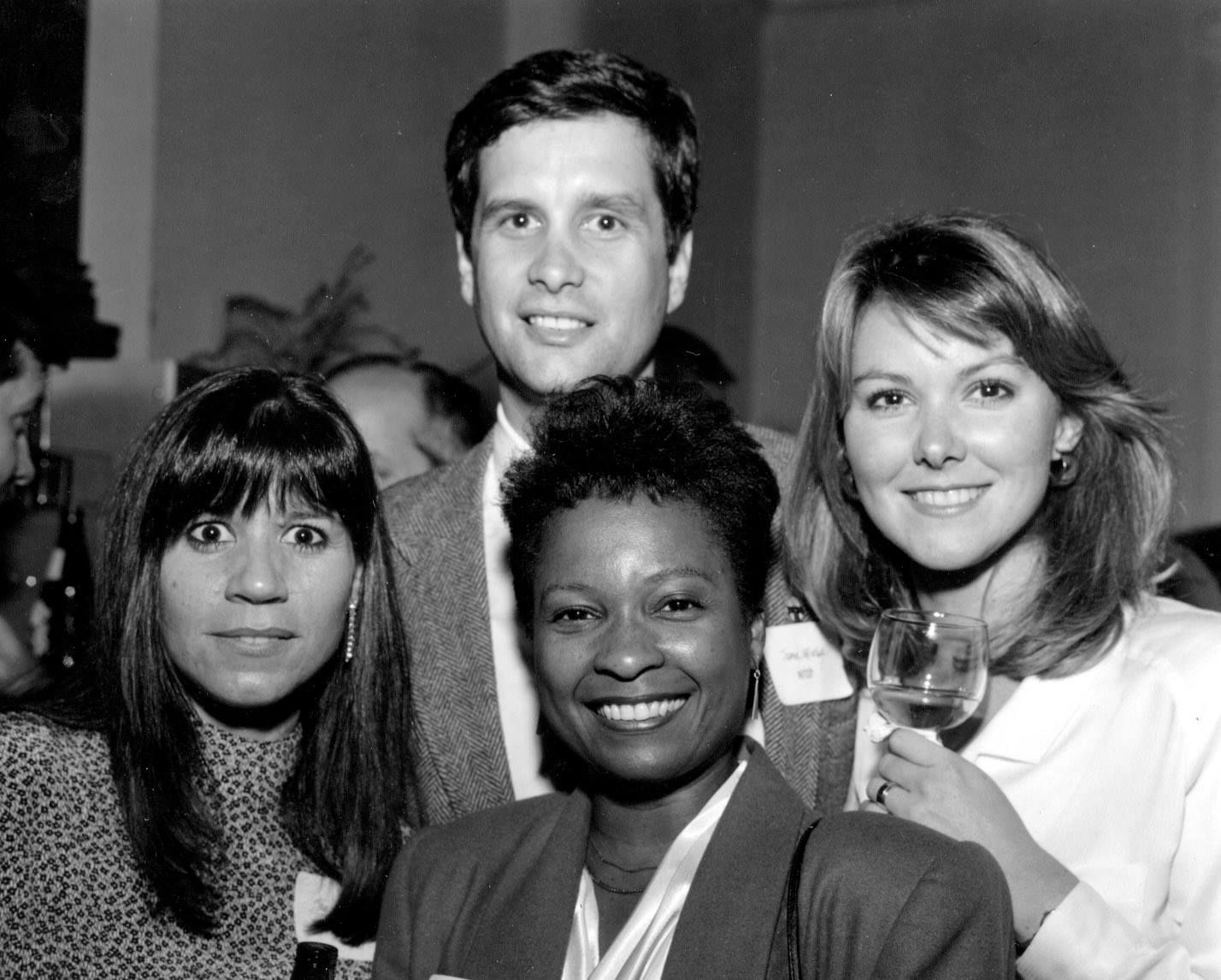
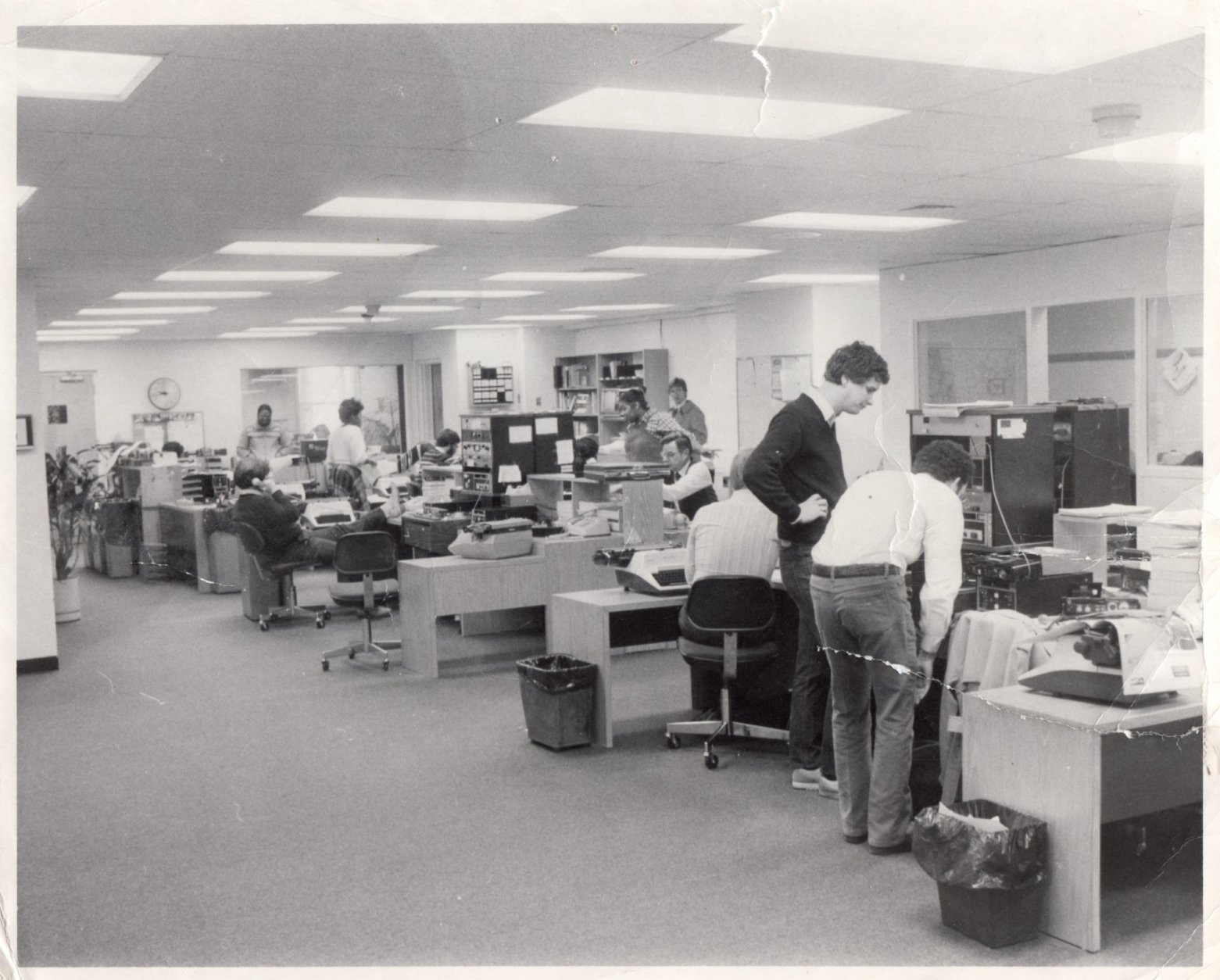
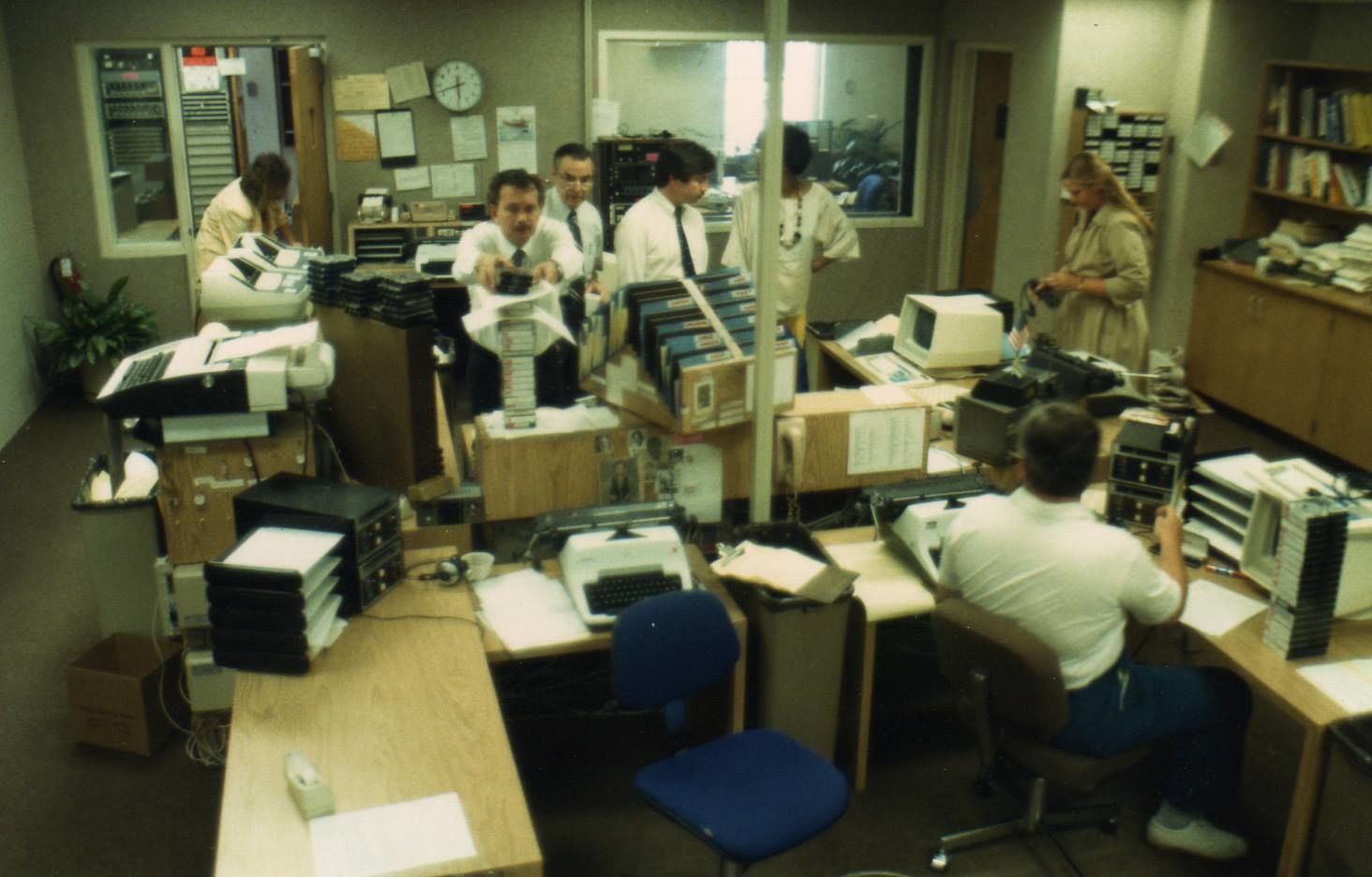
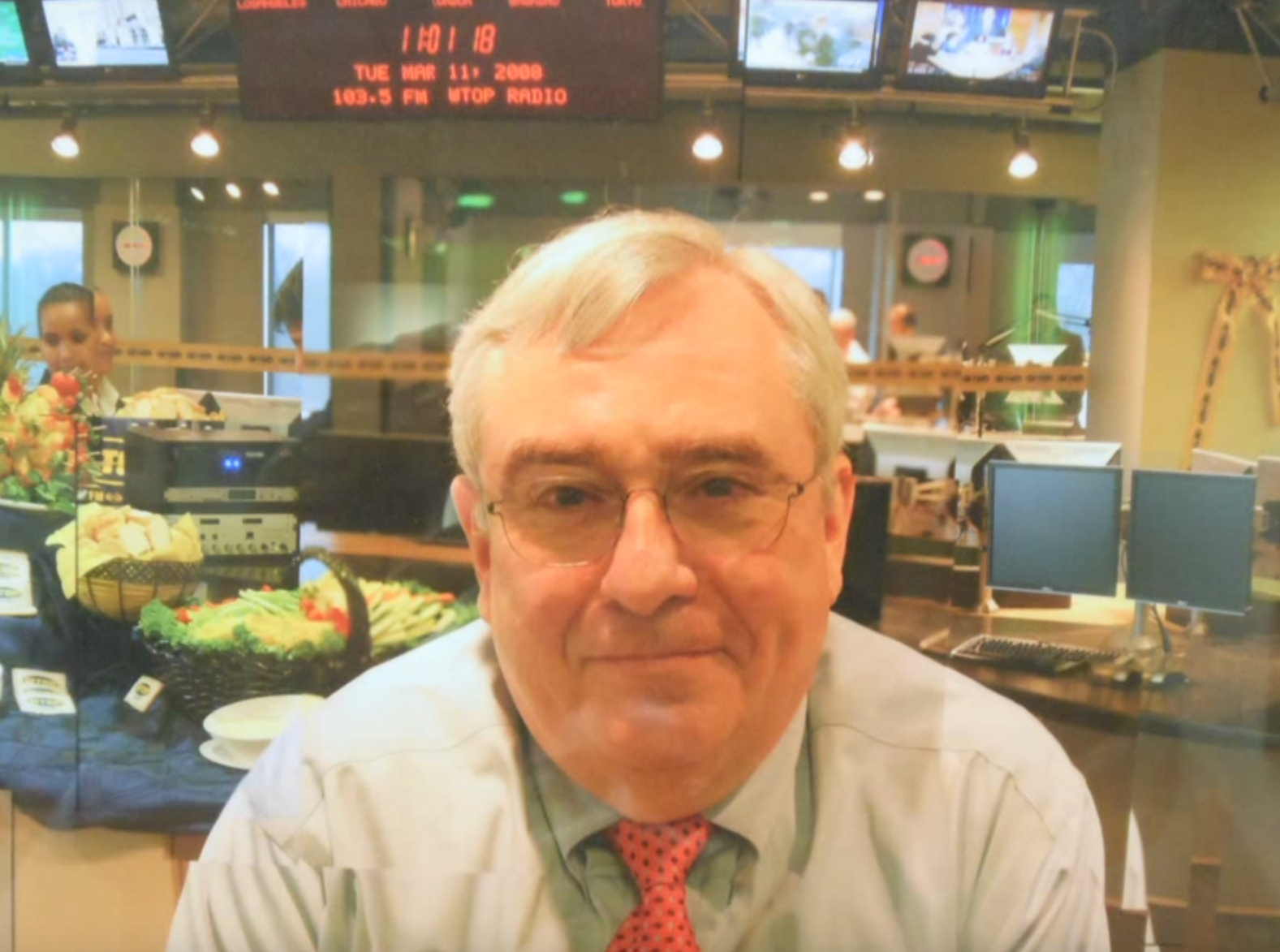
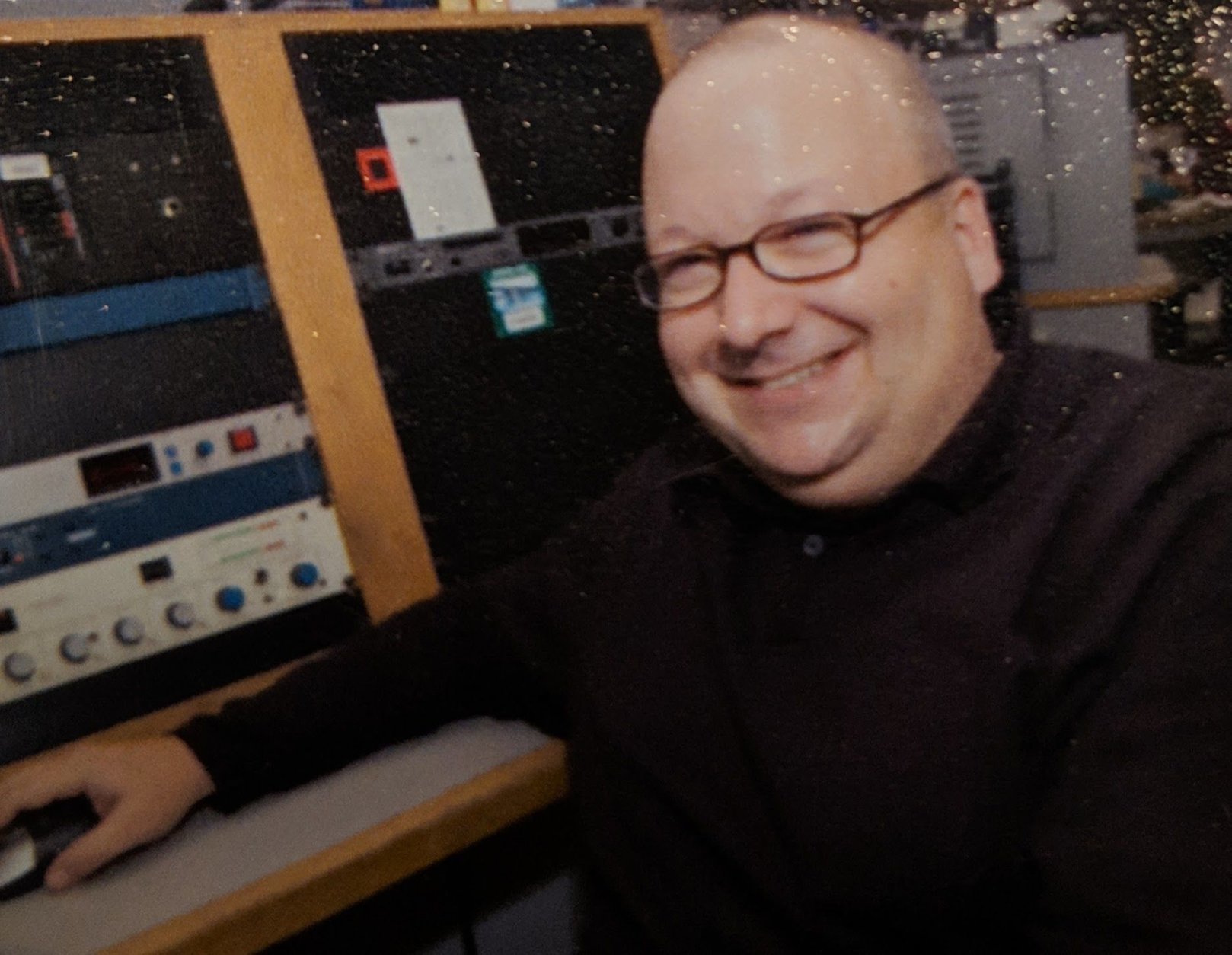
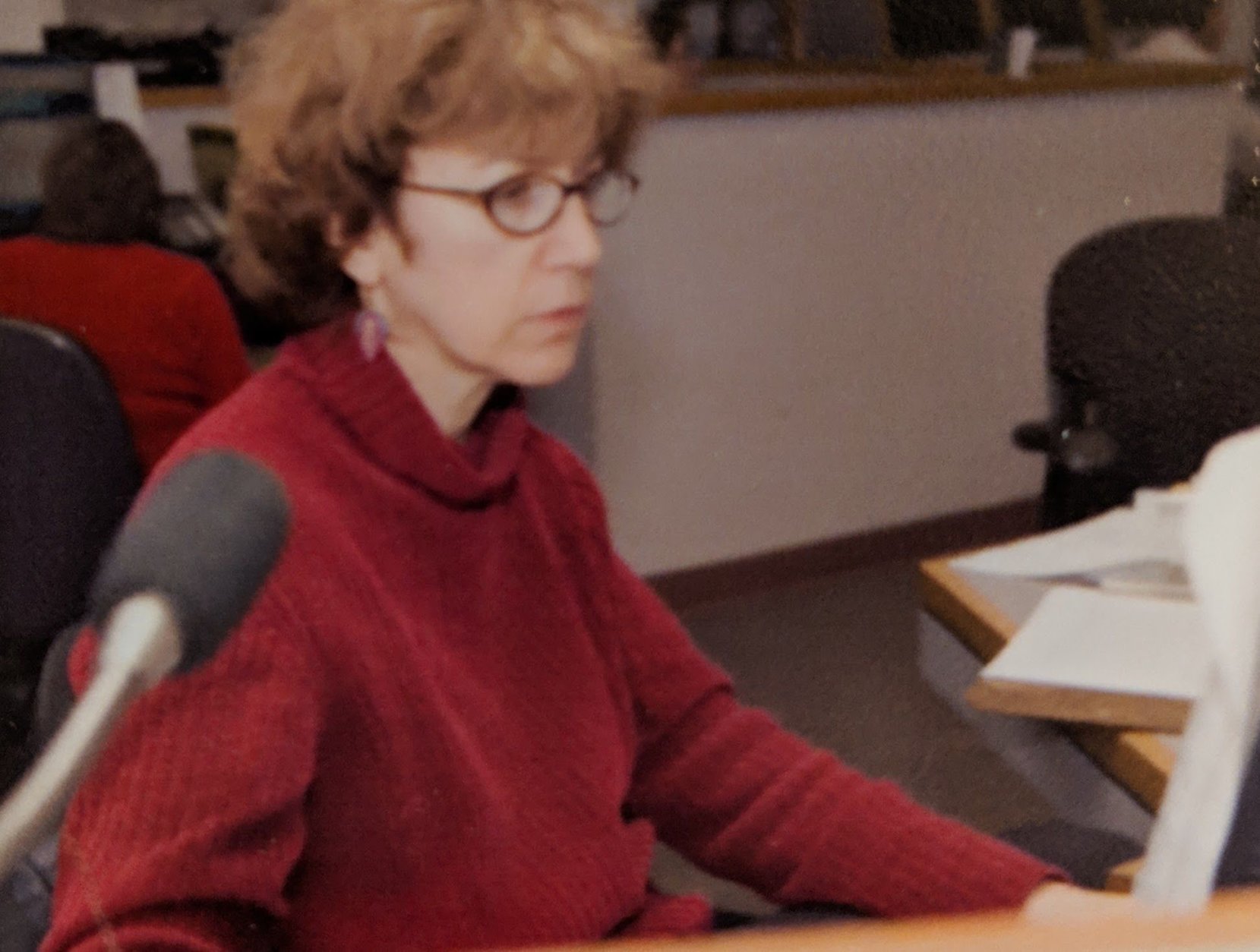
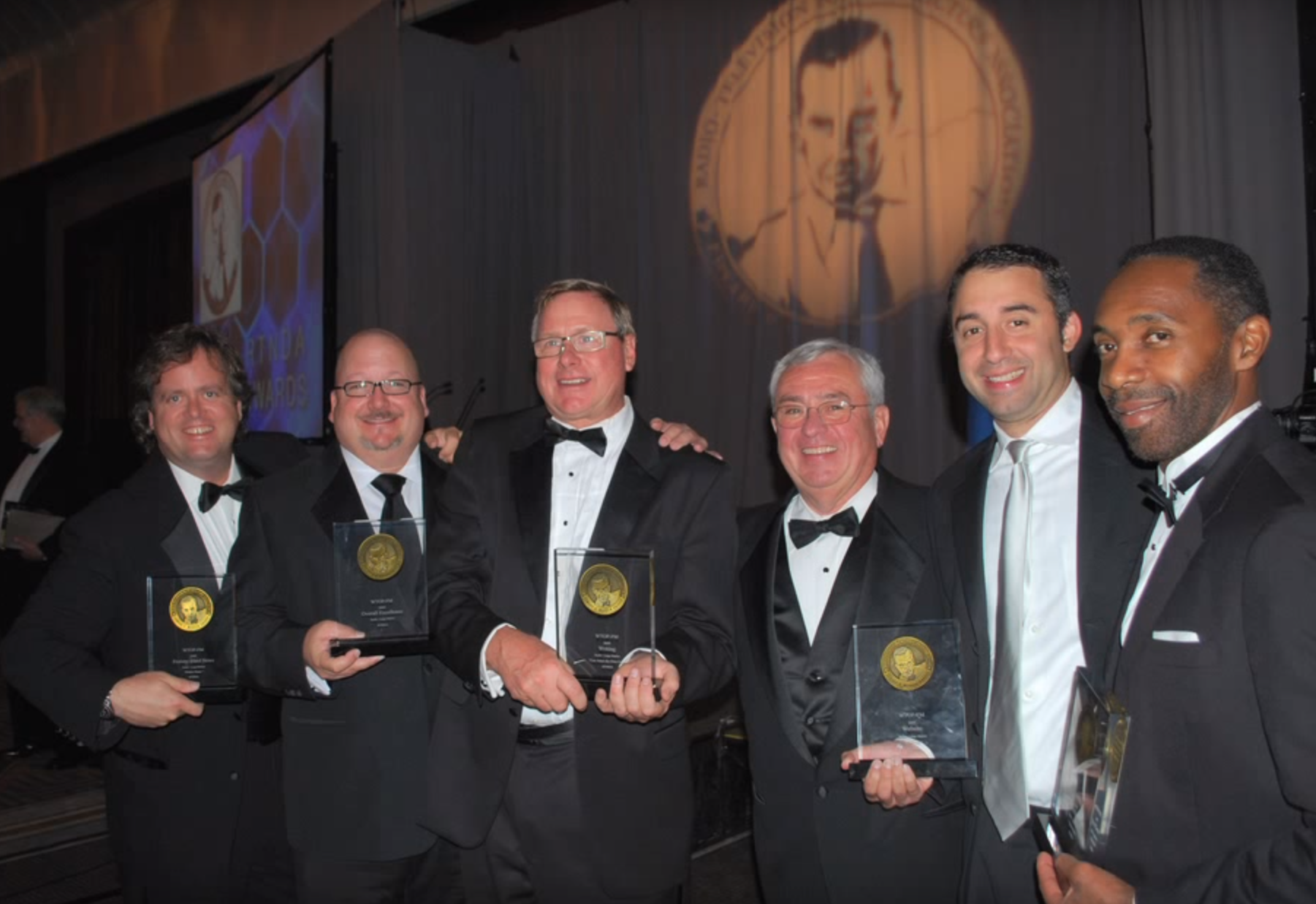
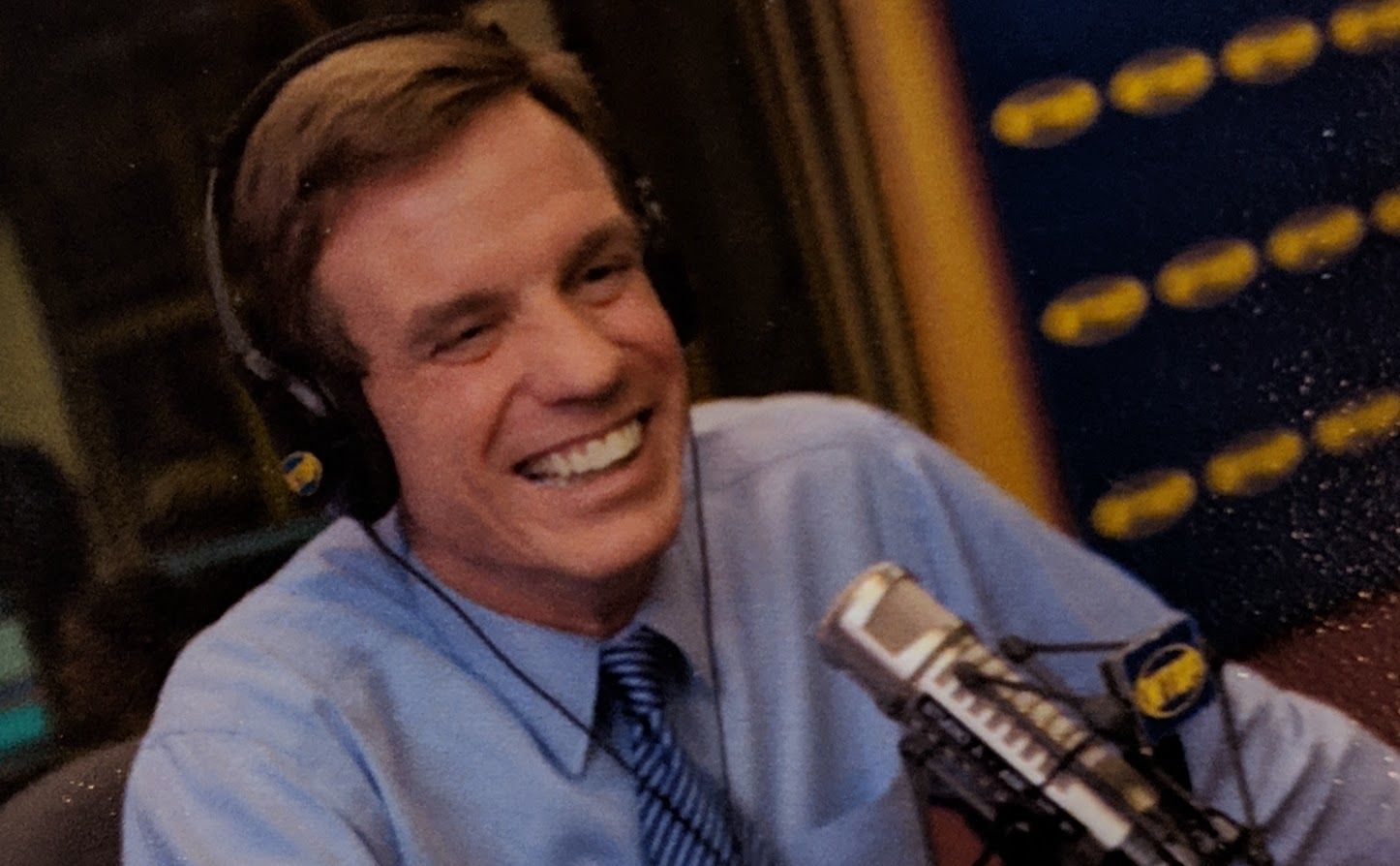
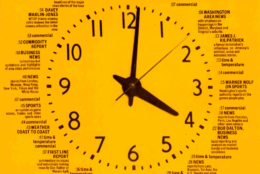
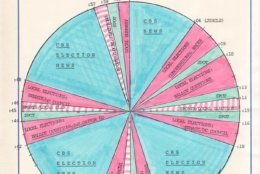

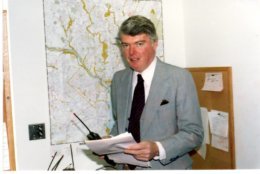
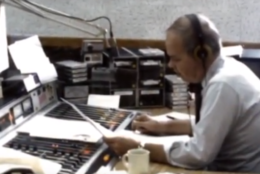
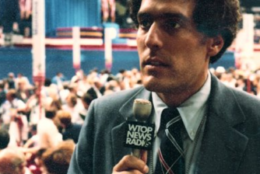
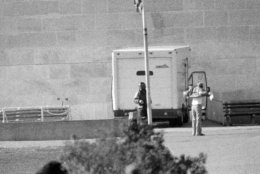
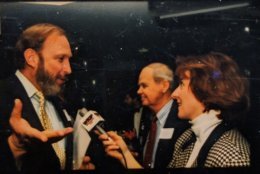
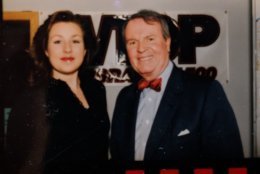
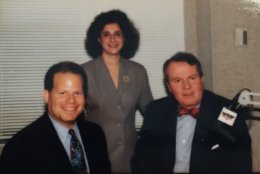
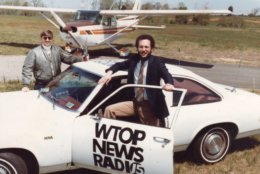
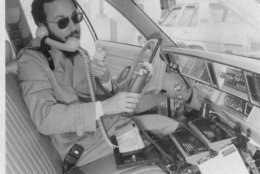
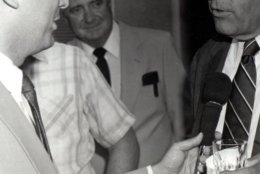
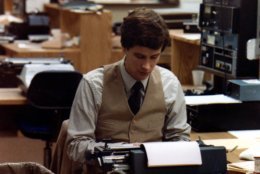
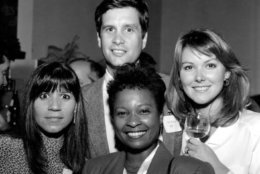
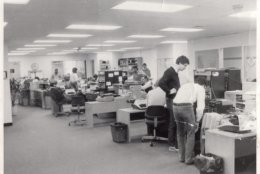
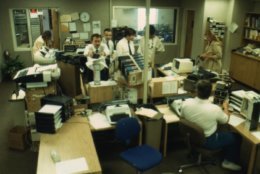
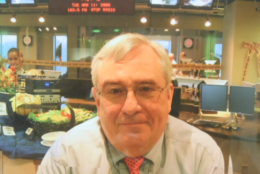
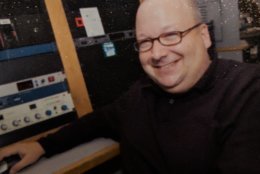
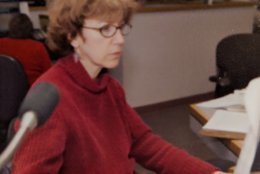
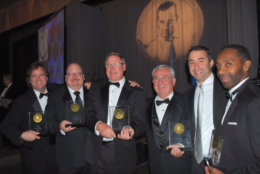
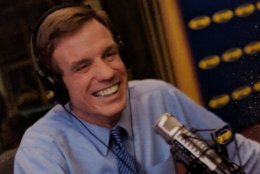
’24 editions of the news’
A news focus generated a real energy in those early days, McConnell recalled.
“We couldn’t wait to start work each day,” he said. “Richard Nixon was our new president. Vietnam was still tearing the country apart; it was the big story,” he said. “But the challenge of, in effect, putting out 24 editions of the news on the radio was daunting. Updating the news, keeping it fresh, proved challenging.”
WTOP Fun Facts
In 50 years, the station has had multiple homes, both literally and on your radio dial.
- The newsroom moved from the Broadcast House in Tenleytown (4001 Brandywine St. NW) to the Stuart building next door (4646 40th St. NW) in 1979; then on to its longtime digs at 3400 Idaho Ave. NW in 1989; and then to 5425 Wisconsin Ave. in Chevy Chase, Maryland (February 2019).
- In 1969, the station was at 1500 AM. It temporarily added a signal at 94.3 FM in 1997. A year later, it added 107.7 FM. It added a frequency, 820 AM, in 2000 (now WWFD “The Gamut”). Then in 2006, it moved to 103.5 FM, broadcasting a stronger signal, and sister station WFED took over 1500 AM.
2019 audiences have a seemingly insatiable appetite for news on the radio (and on TV and online), but the listeners of 1969 weren’t buying all-news radio early on.
“Most of my mail reflects dissatisfaction with WTOP’s all-news and information format,” wrote Bernie Harrison, TV critic for the Washington Star, days after the switch.
Yet there was promise. About a week later, Harrison saw a “revolutionary” quality to it all: “After 12 staggered hours of listening to WTOP’s new 24-hour nonstop news operation, however, I’m impressed but not precisely bewitched by the phlegmatic performance,” he wrote.
Uh … thanks?
While the station has focused its programming on news for 50 years, it’s only fair to point out there have been diversions. There was a time when WTOP carried the great Larry King’s overnight talk show, and there was some weekend and sports programming.
“Sports was a big part of what we did,” said WTOP General Manager Joel Oxley, a 27-year veteran. “We had the Orioles at one point [1978-1999]. … But certainly, even when I first got here, the Capitals and then the Bullets were on our air.”
The O’s, in fact, became something of a polarizing issue among listeners. Nothing against their play-by-play crew, but they weren’t doing traffic and weather together on the eights.
“I have gotten more heat from listeners [for carrying Orioles games] than I have on any topic,” former vice president of news and programming Jim Farley (1996—2014) told the Post in 2000. “They say, ‘You dare to call yourselves a news station!'”
Over time, all those emails pleading for constant news, traffic and weather outweighed the hard-core fans, and WTOP went to a 24/7 all-news format in 1999.
Two decades later, playing up our strength seems to be working out.
“WTOP is a powerhouse of a radio station. And within the industry, you would be hard-pressed to find a station that has a better reputation,” said Ginny Morris, chair and CEO of Hubbard Radio LLC, which bought WTOP in 2011.
‘Indispensable utility’
The need for constant information — even back before 24/7 cable news became a thing — is one reason why WTOP’s brand of news radio has stayed resilient through the years.
“I think it’s one of those formats that has become even more popular because of the world that we live in today and our 24/7 demand for news and information,” said Jill Olmsted, an associate professor at American University’s School of Communication. “It really almost fits into our lifestyle more today than it did when it first started back in the 1920s.”
One example of how it fits in: those updates on the eights, said Dave Statter, who handled traffic reports and spot news stories at WTOP from 1982 to 1985. He marvels at its growth in the 30-plus years since he moved on.
“We’re in our cars so much, and there are people who understand, ‘I need a companion in my car who’s going to get me through the day, tell me what I need to know,’ and I think that’s the beauty of WTOP and all-news radio,” he said.
The format’s ability to connect with an audience in a personal way is another factor in its resiliency, said NBC Washington’s Wendy Rieger, another former staffer from the ’80s. “I think it’s still the human voice, and I think that will always be our communal fire,” she said.
The appeal is perhaps best summed up by Farley, who is frequently credited with Washington’s Top News’s success in recent years. It’s about being what he called an “indispensable utility.”
“We’re like a light switch,” he told the Post in 2006. “You turn us on and we’re there. ‘What’s the traffic like? Which schools are closed? I need the score of the Wizards game.’
“We’re there.”
Another reason why WTOP’s brand of news radio has stayed resilient? The medium itself, he explained more recently to WTOP.
“It’s like the cockroach of technology,” he said. “You just can’t kill it, because it’s free, it’s ubiquitous, it’s easy to get, and as long as there’s something that you want from a radio station — whether it be personality, ties to the community or information … it’s going to be valuable.”
For listeners, that value and reliability begets a close, ongoing relationship between you, the audience, and us.
“It’s deeply connected to the communities of D.C., and the surrounding areas,” Morris said of WTOP, “and provides tremendous public service in the way of news and information to that community.”
The dramatic …
WTOP’s first news-centric decade wasn’t lacking in local history. WTOP was there for Nixon’s 1974 resignation and protests against the Vietnam conflict before its end in 1975.
And in 1977, anchor Jim Bohannon’s shift became a 21-hour marathon when Hanafi Muslim terrorists took 150 people hostage in downtown D.C. The terrorists’ leader was listening to WTOP during the three-day siege, and took exception when Bohannon referred to the splinter group as “black Muslims.” They even threatened to kill hostages until he apologized on Channel 9.
Other dramatic local stories had national relevance. For example: John Hinckley Jr.’s attempted assassination of President Reagan outside the Washington Hilton (1981) and D.C. Mayor Marion Barry’s arrest for cocaine possession (1990).
And then there was a snowy, frigid afternoon in January 1982, when Air Florida Flight 90 struck the 14th Street Bridge and sank into the Potomac River. The crash was but one part of a major news day: Just 30 minutes later, three people were killed and 25 were injured when an Orange Line train derailed near the Smithsonian station. (It was the first fatal accident for Metro. A 2009 collision on the Red Line took a worse toll, killing nine and injuring 80.)
That day was an example of the real-time medium’s advantages. Two enormous tragedies had occurred that would have lingering impacts on the area — particularly its traffic.
“When you have enormous news like on Jan. 13, 1982, with a plane crash and a Metrorail crash within minutes of each other, people are tuning in,” Statter said. “You have a responsibility to be there. They need information to make the decisions immediately and in the coming days.”
McConnell braved frigid conditions that day to provide constant updates. Also covering it was Statter, even though he was not on the payroll yet. He was actually between jobs on Jan. 13, 1982, and had an interview scheduled just days later to be Bob Marbourg’s backup traffic reporter.
Statter was at home in Pentagon City and had his police scanners on. (Journalists are information junkies; you either understand this quirk or you don’t.) He heard talk of an aircraft down, so he called the WTOP assignment desk.
“Nobody knew who I was because I didn’t work there yet,” he said. “And they were a little skeptical, but I told them, ‘You have a plane crash up near the 14th Street Bridge.'”
The editors assigned reporters to get down there. Not content to sit on the sidelines, Statter assigned himself to do the same. He avoided traffic by navigating the back roads of Crystal City and Pentagon City and made his way to the old Twin Bridges Marriott, which was near the crash site. He went up to the top floor.
“Somebody had a room door open,” he remembered. “I asked if I could come in and was out on the balcony and used their phone to give WTOP their first reports of the Air Florida Crash. And they put me to work the next day.”
Seventy-four people died in the crash. Five survived.
What Statter remembers most about covering the story into the evening, he said, was hearing the sirens scream for hours, and comprehending how a jet could end up between those bridges.
“We saw, at that point, no signs of it other than a little bit of debris,” Statter said. “But you didn’t see that a jet was there. You saw people in the water but you couldn’t quite figure it out.”
The crash shut down the bridge. And that shutdown, along with the fatal derailment, impacted traffic around the area for days.
Time now for traffic
(Note: Conditions have probably changed since this 1982 update.)
Before moving on to WUSA-TV (known then as WTOP-TV) in 1985, Statter also handled spot news stories. One, in particular, began after the morning rush hour on Dec. 8, 1982, when anti-nuke activist Norman Mayer drove a van up to the base of the Washington Monument.
Clad in a motorcycle helmet and a blue snowsuit, he claimed to have explosives and threatened to blow up the monument unless there was a serious discussion on banning nuclear weapons.
After 10 hours, he tried to drive off, leading to fears of a bombing somewhere else in D.C.; snipers killed him. Hear some of Statter’s reporting from that day below.
WTOP Fun Facts
Since the format switch in 1969, WTOP has had a half-dozen owners:
- The Washington Post Co. sold it to The Outlet Co. in June 1978.
- In August 1989, it was sold to Chase Broadcasting.
- Evergreen Media (which later became Chancellor Broadcasting) bought it in November 1992.
- Nearly five years later (October 1997), Bonneville International bought it from Chancellor.
- Hubbard Broadcasting bought it for over $500 million in January 2011.
… the unthinkable …
Journalists, contrary to what some folks say, are usually nice people, too. And it can be difficult to cover something with a detached professionalism when the story is shocking, as with the cocaine-related death of Maryland basketball standout Len Bias (1986), the murder of Redskins safety Sean Taylor (2007) and the 2017 attack on members of Congress during a baseball practice in an Alexandria park (2017).
It can be especially difficult when the story hits so close to home that the terror is palpable, as with the 9/11 attack on the Pentagon (2001) or the sniper shootings that gripped the area in 2002.
“I remember some new reporters who hadn’t been out a lot who I sort of had to calm down and direct in the field because they were freaking out,” said longtime editor Judy Taub, who retired from WTOP after a 35-year career back in December.
“It was that kind of a story though. … People need to know what’s going on.”
Mike McMearty, now the news and programming director, started his extensive career here back in 1992. He remembers how nobody needed to be asked to work long hours and how people were showing up in the newsroom that day even if they were off.
The work WTOP did that day, he said, served as a lifeline.
A friend told him that near the Mall, WTOP could be heard playing loudly from a car that day — with people crowded around it, listening, “and then he’d walk a few more feet, and he’d pick it up again. … Everywhere he went, he could hear WTOP playing.”
That’s because the local impact extended beyond the Pentagon, Taub said. “It was everybody in the federal government who didn’t know what to do, were leaving all at once and were walking miles because Metro was all backed up, and people trying to get to their kids in schools and … it becomes the local story.”
As terrible as that all was, the tragic day stands as a moment when WTOP did some of its best work, Oxley said, even amid traumatic circumstances. “We once again were able to do our job and help people through an incredibly traumatic time,” he said.
Just a year later, fear would grip the region again, when John Allen Muhammad and Lee Boyd Malvo killed 10 and wounded three during their 22-day sniper shooting spree in D.C., Maryland and Virginia. Some of those victims were gunned down while filling up their cars with gas. Others were shot in parking lots after shopping. One was sitting on a bench reading.
Kristi King covered much of the aftermath, and it still haunts her to this day.
“You’re interviewing people who are scared by [pumping] gas and people who are scared to walk on the street,” she said.
“Day after day, it felt like it was never going to end.”
Staying on top of the story was especially fraught as well, Taub said. With everyone on edge, anything that looked slightly suspicious meant a phone call to the police. And the newsroom had to filter out rumors and unconfirmed information that could have caused a panic among listeners.
“We had to make a decision [of whether to run something],” she said. “ … And I remember many times saying ‘no,’ because it happened so often.“
So they waited.
“Most cases, there were false alarms and we didn’t report every false alarm,” Taub said. “But when there were shootings, we were all over that, and we had reporters who were all over it.”
No news was itself news during those tense weeks, McMearty recalled.
“People listened to the radio just to hear that nothing happened, because something was almost happening every day,” he said.
And the palpable fear led to unusual stories that no journalist ever thinks they’d do: “We were teaching people how to walk in zigzag patterns when they’re in the parking lots at malls, and how to stand behind the gas pump when they’re pumping gas,” McMearty said.
Such traumatic events do take their toll on a newsroom. (We live here, too, after all.) But as the boss so eloquently puts it: “When the fit hits the shan, everybody really kicks in and … that’s when we’re really at our best — when there’s breaking news.”
WTOP Fun Facts
Q: Where did the phrase “Glass-Enclosed Nerve Center” originate?
A: Former vice president of news and programming Jim Farley coined the term about 20 years ago, current news and programming director Mike McMearty said.
The feeling was that the audience should think of WTOP as more than a utility, McMearty said. “[Farley] thought it would be some great ‘theater of the mind,'” he said. “And sure enough, when people would come to visit, they’d always be like: ‘Where’s the Glass-Enclosed Nerve Center?’ ‘Can I touch the Glass-Enclosed Nerve Center?'”
“It’s become part of the fabric of who we are,” he said, so much so that here in Chevy Chase, the new GENC is entirely glass-enclosed.
… and the joyful
The news isn’t all bad, or course. Certain inaugurations and protests through the years count as feel-good local stories (depending on where you sit on the political spectrum).
Journalism’s “toy department” brought joy as well, and WTOP was there for the sports moments that united the area, such as the Redskins’ Super Bowl dominance in 1983, 1988 and 1992. We were there when the Maryland Terps won it all in the 2002 NCAA Tournament, and when the Maryland Lady Terps followed suit in 2006.
Baseball’s 2005 return to the District was something of a victory, too. And then there is the Caps’ first-ever Stanley Cup (2018).
Such elation is a joy to cover, McMearty said, especially that Caps’ Stanley Cup.
“The Caps were like a … bottle of Champagne that’s been aging and the top pops off it and out comes everything — the whole bottle — without being shaken,” he said.
Crawling for the story
WTOP reporters have gone to great lengths to get good sound and a great story.
Case in point: Rieger, who anchored and reported for Washington’s Top News from 1985 to 1988, long before she would anchor NBC Washington’s 5 p.m. newscast.
One doesn’t keep a major-market media job this long with unpaid dues; Rieger has stayed current on hers.
She recalls one instance during her tenure at WTOP when she was covering homeless advocate Mitch Snyder, whose Community for Creative Non-Violence helped establish the Federal City Shelter. Snyder advocated for restaurants and supermarkets to share unwanted food with the homeless instead of throwing it out.
“So he would go dumpster diving and pull up all this beautiful food, and then he cooked lunch for a bunch of lawmakers, including Sen. Ted Kennedy,” she said.
The Massachusetts senator was among several dignitaries sitting at a long table, she said, and the one thing separating her microphone from its necessary placement (you gotta get that audio for your story) was a rather-dense gaggle of cameras and reporters.
No big deal. Rieger literally hit the dirt, army-crawled through the competition, stunned Sen. Kennedy … and got the sound.
Nuclear war! (a WTOP exclusive)
Dedication to getting the job done notwithstanding, mistakes do get made. The following infamous story from the 1970s is legend at WTOP, and involves a monumental technical screw-up.
Long story short, someone behind the scenes pushed the wrong button. Fortunately, this button didn’t launch any missiles; it did, however, broadcast a civil-defense warning, and listeners were instructed to take cover.
Yet there was neither literal nor figurative fallout. McConnell remembers the station receiving no terrified phone calls (presumably because listeners were racing to the nearest shelter).
They kept calm and somehow carried on.
“It’s still amazing to me that we received no calls about it from listeners as far as I could determine. I thought the roof was going to come in,” he said more recently.
It was a piece of information that, for once, WTOP was happy to get wrong.
One only hopes Graham never heard it.
McConnell detailed the unfortunate incident in this 2009 video.
Evolving and serving
The tools of the trade, of course, have changed through the years.
For reporters in the field, tape recorders have given way to all-digital devices. Two-way radios gave way to laptops and cellphones. (One of WTOP’s own, Neal Augenstein, was in fact the first to use an iPhone to report.)
Inside the newsroom, Taub started with typewriters and wire machines to get printed-out news copy from services like The Associated Press. Later, computers allowed for easier writing, editing and connectivity to the latest wire updates.
‘It just made a huge difference in the amount of information that comes in and that you could bring in,” she said.
The internet brought an ability for quick research, she said, a “dramatic” change from the times when she had to go through a library’s microfiche collection to get information for a story.
Social media sources like Twitter have widened that information pipeline further. And as with the sniper coverage, an overabundance of information requires additional scrutiny from a news organization. Nothing erodes trust like going with something that later proves to be a rumor.
Hence the maxim here at WTOP: “First, get it right, then get it first.”
“You do have to go through the same checks that we would do for anything,” Taub said. “And fortunately, because WTOP has always had news managers that understood the importance of being an accurate news station. … Even though there was kind of an underlying pressure to get it on, nobody wanted you to put anything on the air.”
Or online, which brings us to another way that the organization has evolved. You’re reading it right now. WTOP.com launched in December 1998, a time when some were still learning what hyperlinks were. A year later, WTOP’s on-air signal went online.
[Its sister station, WFED (1500 AM), became the first internet-only radio station when it launched in 2000.]
It all required a bigger staff and signaled a commitment to a quality product for WTOP’s customers, Taub said.
“It was always important, I think, when management realized that it was important to grow it early on and to dedicate the staff that it needed,” she said. “Also: dedicating staff that we needed to cover the D.C./Maryland/Virginia area the way we wanted to.”
‘Platform-agnostic’
This addition of digital expertise to a broadcast operation is another example of how the journalism industry itself has evolved, as news organizations that gained their initial success on “legacy platforms” (e.g., newspaper, radio and TV) expand to serve their audiences on newer technology.
“Since 2011, the team in Washington has really put a lot of energy toward expanding our digital presence in the marketplace and beyond, through WTOP.com and various other means of distribution,” Morris said.
“So it’s really very much a three-dimensional brand, available to the consumer in many different ways.”
Effectively expanding meant nipping any radio/digital newsroom tribalism in the bud.
“It was essential for our brand to be platform-agnostic,” Oxley said. “Different people consume news different ways. We wanted to, regardless of the platform, send the news out simultaneously so people could know that they could rely on WTOP to get the most up-to-date news no matter which way they chose to consume it at that point.”
Farley stressed that “platform-agnostic” culture early on, despite the set-in-their-ways crowd.
“Initially we had the kinds of ‘protect-my-turf’ things you’d expect,” he said. “‘Oh, don’t put that online until we get it on the radio.’ And we explained: It doesn’t matter. It is us. If WTOP.com breaks it first, or it’s a news advisory from WTOP on a social media site, it’s WTOP. ‘We’ are ‘them’ and ‘they’ are ‘us.'”
And “our”/”their” mission remains: Be that “indispensable” utility and deliver news, traffic, weather and sports the way that you, the customer, wants.
“You know that you can turn us on and we’re going to be there for you, and we are there no matter what,” Oxley said.
WTOP’s Neal Augenstein contributed to this report.


